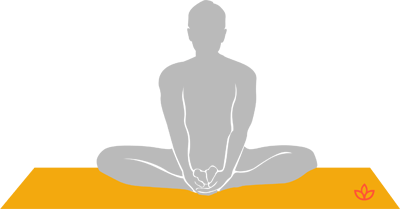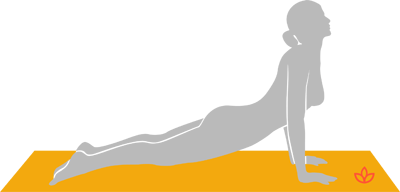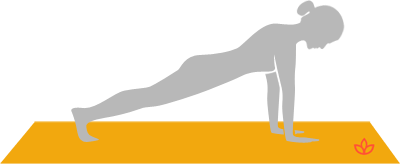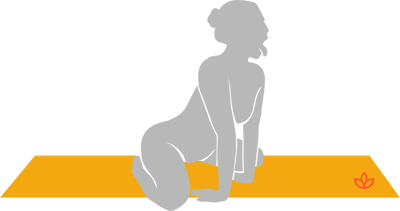Our world is currently in the midst of a pandemic, so it goes without saying that stress and anxiety are common factors in everyone's lives right now. The CDC has an entire webpage dedicated to how to manage anxiety and stress, that's how prevalent these emotions are in our everyday lives now.
One of the things the CDC recommends is to take care of your body:
"Take deep breaths, stretch, or meditate."
Even before the pandemic, the Anxiety and Depression Association of America (ADAA) reported that about 40 million people affected with anxiety disorders in the USA are adults. Clinical anxiety disorder can develop from a complex set of risk factors, including genetics, brain chemistry, personality traits, and life events.
Even though it is considered highly treatable, only 36.9% of those suffering receive treatment. Besides negligence and taboo surrounding anxiety and depression treatment, there is also ignorance regarding the kind of help available for treating depression.
Not many treatment-seeking depressed individuals know the worth of yoga in treating anxiety and depression.
It's great to see that the CDC is recommending that people turn to meditation, yoga and breathwork to help get them through this difficult time.
This sequences of five yoga asanas can help to elevate negative thoughts, and help you welcome all the light life sends our way, even if you're finding the world a very dark place at the moment.
1. Butterfly Pose (Baddha Konasana)
Anxiety and residuals from physical and psychological trauma gather at different zones of our body, one of them being the hips, where most emotional energy concentrates.
The butterfly pose or baddha konasana should be practiced in order to release the hips and facilitate the clearing of pent-up energy through and out of the body.

Try it:
- Sitting on your mat, bend your knees and bring the soles of your feet to touch
- Keeping your feet on the mat, take a deep breath and lengthen your spine
- Exhaling gently, let your knees drop groundward
Keep on performing the baddha konsana for a few breaths and feel your heart fill with each breath.
Read: 5 Yoga Poses to Release Tight Hips
2. Upward-Facing Dog Pose (Urdhva Mukha Svanasana)
Chakra energy dynamics are extremely relevant when you are practicing yoga in order to up your spirits. Quick quiz: with which chakra lies the ability to express, communicate, be creative, and have good sense?
It’s the fifth, the throat chakra, addressable by poses such as urdhva mukha svanasana. When you learn how to express your mind, the acute repressions, violations, and negativity shall be released and transformed into something creative.

Try the pose:
- Lie down on your stomach with your legs extended and the top of your feet pressing deep into the ground
- Keeping your palms beneath your shoulders, push into them and lift your body off the mat, inhaling deeply
- To avoid compressing the lower spine, lift your sternum as high as possible
- Hold the pose for a few breaths
Breathe into the expansion of your chest and the activation of your throat chakra. May your expressive spirits explode out of this pose.
Read: Understanding the 7 Chakras
3. Plank Pose (Kumbhakasana)
Core strengtheners like plank pose must also be featured on this list. You can only feel good when you are feeling strong.
Core strength is the back bone of confidence and courage; the kind needed to clinch difficult jobs and take risks.

Try this pose to feel your inner strength fire:
- Begin in table top pose, expanding your fingers wide
- Rotate your shoulders to feel fluid, and fix your gaze between your hands
- Tucking your toes, step both feet back and lift your knees off from the mat
- Draw your heels back and tip the crown of your head back slightly
- Mind your wrists and press strongly down with your fingertips
- Hold your hips high, engaging your core
- Hold the pose for a few breaths and then lower.
Utilize this pose to help conquer negative forces.
Read: A 15-Minute Yoga Sequence for Core Strength
4. Lion Pose (Simhasana)
Spare a thought for your jaw line. Stress and negative anticipation can stiffen up your facial expressions causing obstacles in being friendly and presentable.
The reflexive action of gritting one’s teeth during periods of stress further intensifies the negative disposition. While the chain of reaction can occur from mental state to physical manifestation, the reverse can also occur: physical relaxation to mental relaxation.

Try softening up:
- Kneel, sitting on your heels with your hands resting on your knees
- Sitting up straight, inhale through your nose into your core
- Exhale by opening your mouth wide and trying to touch your tongue to your chin
- Look up, directing your gaze between your eyebrows, where the ‘third eye’ is, and inhale
- Release your breath through your mouth with a strong “haaa” sound, but without exercising your vocal cords
- Repeat steps two through five
Read: Lion's Breath
5. Savasana (Corpse Pose)
The last resting pose of this anxiety ridding sequence is savasana or corpse pose. In the stillness and repose of savasana, you can do some positive introspection and potentially route out the cause of depression.

Try this pose to find stillness:
- Lie on your back on the mat with your legs stretched out and your arms relaxed
- Concentrate on areas where tension has been held up, and with each exhale try to release these areas
- If necessary, try propping up your head with blankets or covering your eyes with a cloth to help be more comfortable in the pose
- Take deep, relaxing breaths
- Rest
Ecstasy and gloom come in peaks and valleys. Work to achieving equilibrium to help find contentment.
During These Times of Stress and Uncertainty Your Doshas May Be Unbalanced.
To help you bring attention to your doshas and to identify what your predominant dosha is, we created the following quiz.
Try not to stress over every question, but simply answer based off your intuition. After all, you know yourself better than anyone else.